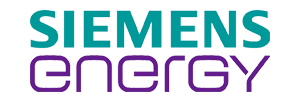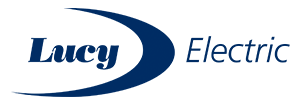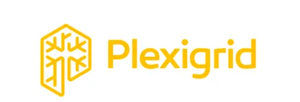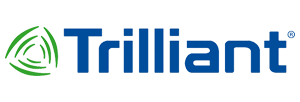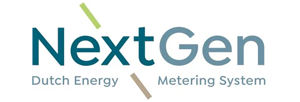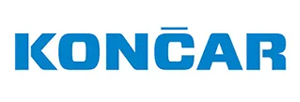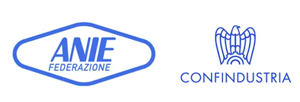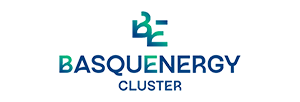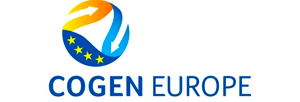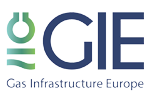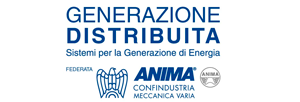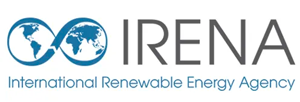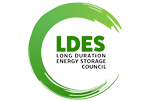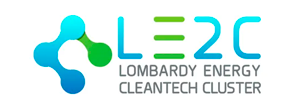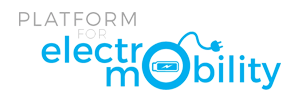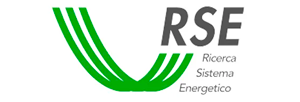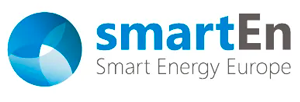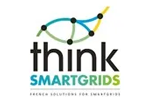Battery Energy Storage System (BESS) in the Energy Transition
)
- Event: Enlit Europe 2024
- Date: 23rd October 2024
- Estimated Read Time: 10-12 minutes
Quick Summary:
At Enlit Europe 2024, experts gathered to explore the rising importance of Battery Energy Storage Systems (BESS) in stabilising and optimising Europe’s evolving energy landscape. Prompted by real-world events like the NordLink outage, the session, led by Maxim Suk, underscored how BESS has moved from a supporting role to essential infrastructure. Speakers from Aurora Energy Research, Tauron, Sorgenia, and Samsung SDI highlighted market growth, evolving revenue stacks, and region-specific regulatory frameworks, from Poland’s 4-hour battery model to Italy’s MACSI dual-market system. With flexibility, scalability, and system integration as central themes, the panel concluded that Europe’s energy future will be increasingly data-driven, decentralised, and battery-backed.
Watch the video or read the article below:
Introduction: Battery Energy Storage Steps into the Spotlight
The Enlit Europe 2024 session titled “The BESS in the Energy Transition” brought together prominent industry voices to unpack the evolving role of Battery Energy Storage Systems (BESS) across European energy markets. Hosted by Maxim Suk, Senior Consultant at DNV, the session opened with a compelling narrative: on October 8th, 2024, the NordLink interconnector between the UK and Norway suddenly tripped, causing a 1.4 GW supply loss. Within minutes, battery storage sprang into action—restoring frequency, stabilising the grid, and even trading on the wholesale market within just five minutes. The message was clear: a battery energy storage system is no longer ancillary—it is essential.
Joined by leading voices from Aurora Energy Research, Tauron, Sorgenia, and Samsung SDI, the session delved into market trends, regulatory frameworks, development strategies, and key revenue models for BESS in the dynamic European energy landscape.
Section 1: Global Trends and Europe's Scaling Vision – Aurora Energy Research
Guillermo Gracia, Research Associate at Aurora Energy Research, laid the foundation with a global panorama of battery storage trends. According to Aurora’s projections, global utility-scale storage capacity—in 2023 pegged at 200 GW—is set to grow ninefold, reaching 1.8 TW by 2050. In Europe alone, grid-scale battery deployments are expected to hit 51 GW by 2030, translating to €33 billion in investments.
“Flexibility needs in the EU are soaring, but not all member states have quantified their actual system requirements,” stated Gracia. Yet even in the absence of systematic assessments, the trajectory is unmistakable: batteries are scaling not only in number but in capability.
Key Technology Basics:
- Chemistry: Predominantly lithium iron phosphate, supported by synergies with the EV battery supply chain.
- Capacity range: Typical systems now range from 10 MW to 500+ MW.
- Duration: The industry is shifting from <2-hour durations to a broader mix with 4–8 hour systems becoming competitive.
- Grid connectivity: While traditionally connected at the distribution level, rising power capacities are pushing BESS toward transmission connections and hybrid colocation with renewables.
Driving Europe’s Battery Deployment Boom
Aurora’s market attractiveness index sees Great Britain, Italy, and Ireland as leading the pack for investment. Several foundational drivers were highlighted:
- Variable Renewable Energy (VRE) Growth: Expected doubling of renewable capacity by 2030 will demand flexibility for grid balancing.
- Thermal Generation Phase-out: The decline of coal, gas, and nuclear generation removes not just energy, but essential services like frequency response and inertia.
- Electrification: Electrifying heating, transport, and hydrogen production adds a projected 50% increase in electricity consumption.
The takeaway? Batteries must evolve from simple frequency-response tools to versatile, multi-market assets offering energy arbitrage, grid services, and congestion relief.
Revenue Stack and Market Participation
Historically, frequency response services dominated battery economics, particularly in regions like the Nordics. However, saturation and price cannibalisation are reducing these margins, compelling operators to diversify income via wholesale energy arbitrage, capacity markets, and other balancing services.
The ability to “stack” revenues across markets—DA/ID trading, frequency response, tertiary reserves—is becoming a make-or-break factor.
“Optimisation across energy markets is no longer optional—it’s the operational standard,” Gracia noted. This growing dependence on sophisticated trading algorithms and market-savvy asset optimisers is reshaping developer and owner profiles.
Policy Support: Crucial, But Not Absolute
Aurora’s regulatory landscape map showed significant variance across Europe. While countries like Italy have set ambitious targets (50 GWh by 2030 under the MACSI scheme), others like Great Britain rely more on mature markets and less on direct subsidies.
Gracia emphasised: “Policy targets can stimulate investment, especially in nascent markets—but they’re not a prerequisite for success in mature ones.”
Capacity Markets: Helping Hand, Not a Silver Bullet
Six EU capacity markets currently permit battery participation, with Britain accounting for a lion’s share of awarded capacity. However, de-rating factors based on duration mean shorter batteries receive a smaller portion of auction-cleared prices.
“Capacity markets support the economics, but they don’t define them,” Gracia concluded.
Section 2: The Polish Perspective - Tauron
Offering a deep dive into on-the-ground realities was Michał Szubert, Vice President of Asset Management and Development at Tauron, one of Poland’s leading integrated utilities. With €10 billion in annual revenues and a vast asset base across coal, renewables, and grids, Tauron is uniquely positioned to steer Poland’s energy transition.
Poland’s Growing Appetite for Storage
According to Szubert, Poland is on track for rapid BESS growth—projecting over 9 GW by 2040, with the steepest scale-up likely occurring before 2030. Early R&D trials have matured into bankable business models, with several hundred megawatts of capacity in Tauron’s development pipeline targeting the national capacity market.
Challenges and Opportunities
Szubert outlined several barriers to scaling BESS in Poland:
- Supply Chain Fragmentation: Chinese suppliers dominate DC block pricing with ultra-competitive offers, but Korean and American offerings (e.g., LG, Tesla) are gaining ground.
- Limited EPC Experience: A lack of local contractors with EPC capability and certification expertise is slowing build-out.
- Integration Gaps: Sophisticated optimisation across energy trading, dispatchable thermal, and customer flexibility remains a work in progress.
- Permitting and Fire Safety: Still emerging as consistent hurdles, particularly for large-scale installations.
A liberalised balancing market, introduced in June 2024, dramatically improved pricing transparency and resilience in revenue stacking through energy arbitrage strategies and greater predictability from the capacity market framework. “We’re seeing strong returns from frequency services—maybe the best we’ve seen since balancing reform.”
The 4-Hour Battery Rule
Poland’s capacity market specifically supports 4-hour duration BESS—a regulatory design Tauron embraces. This pushes developers away from 1–2 hour arbitrage-only models and into fuller participation in reliability and resilience roles.
Standalone vs Colocation
While colocation with PV/wind offers interconnection cost advantages, capacity market incentives still favour standalone configurations. Szubert suggested that better regulatory treatment of cable pooling could unlock hybrid value streams.
“The economics are now compelling—and our in-house land, grid, and permitting know-how allow us to move quickly,” he stated, underscoring the unique advantage of incumbent utility-led development.
Section 3: Italy's Dual Market Innovation - Sorgenia
Mateo Ani, representing energy manager Sorgenia, explored Italy’s innovative MACSI programme—Europe’s only market-splitting mechanism for battery asset construction and operation.
With 4.4 GW of thermal and nearly 400 MW of renewables already in its portfolio, Sorgenia aims to add over 200 MW of BESS over the coming decade.
Italy’s Headache: Cannibalisation and Reserve Adequacy
Ani highlighted three systemic problems exacerbated by high VRE penetration:
- Price Cannibalisation: PV flooding the midday market crushes wholesale prices.
- Grid Stability: Renewables provide little inertia or system services.
- Reserve Reduction: Decommissioned thermal assets erode regulating reserves.
MACSI: Two Markets, One Battery
The MACSI framework de-links asset build and energy market operation. Operators bid first to build physical storage assets via Turner auctions. Separately, virtual units representing these assets participate in energy and ancillary service markets.
“Projects are granted one guaranteed cycle per day for 15 years, with up to 80% of ancillary revenue rebates going to Turner,” Ani noted.
However, design clarity is still developing—particularly around future eligibility of primary frequency and other services post-2025.
Curtailment and Congestion
Ani confirmed that Italy’s topography—narrow and long—creates natural congestion bottlenecks. By placing BESS in the south (surplus generation) and allowing dispatch flexibility regionally, MACSI aims to relieve northbound transmission pressure.
“Distributed batteries as congestion-mitigating resources will be key to unlocking VRE integration,” he concluded.
Section 4: Manufacturer Response – Samsung SDI
Peter Fankhauser of Samsung SDI offered a manufacturer perspective on the competitiveness and technology pathways for BESS moving forward.
Fankhauser addressed the elephant in the room: China’s dominance. With CATL holding at least 40% global market share, pressure on European and Korean manufacturers is significant.
Lessons from Solar—A Warning for Battery Markets?
“This feels like solar in 2010. China drove prices down, and many Western players disappeared,” said Fankhauser. The situation is now strikingly similar for batteries, with price-driven competition heightening concerns over stranded assets and manufacturer solvency.
Samsung’s Differentiation Strategy
Instead of racing to the bottom on price, Samsung is emphasising:
- ESG Compliance
- Superior degradation curves for longer battery life
- Local presence in key geographies (especially the U.S.)
However, Fankhauser expressed concern regarding evolving EU battery regulation. “There’s a lot of regulatory uncertainty around recycling quotas and battery passports. Everyone’s trying to comply, but rules are still being written.”
Q&A and Industry Exchanges
Closing thoughts from the panel reaffirmed the session’s core insight: the market is shifting rapidly toward multifaceted, value-rich battery operations.
A question around co-location with renewables sparked discussion from both Aurora and Tauron:
- Guillermo Gracia noted that curtailment is only “one piece of a colocation business case,” with other considerations like CAPEX optimisation, permitting preferences, and hybrid dispatch shaping the value proposition.
- Szubert emphasised that in Poland, the ability to gain faster grid connections and smoother permitting made colocation appealing, despite revenue model limitations.
Conclusion: Europe's Battery Future - Diverse, Data-Driven, and Decentralised
Across the panel, a consistent message emerged—a battery energy storage system is charting an upward, though increasingly complex, trajectory. The days of simple FCR-focused value chains are giving way to intricate stacking, regional nuance, and deeply entwined grid participation.
From Poland’s 4-hour capacity market and balancing reform, to Italy’s visionary MACSI scheme and ongoing technology evolution, Europe’s battery landscape today reflects a continent in transformation.
As Guillermo Gracia succinctly put it, “Energy arbitrage is the future. Optimisation is essential. And batteries are the backbone of balancing tomorrow’s grid.”
JOIN US IN 2025: BOOK YOUR PASS












